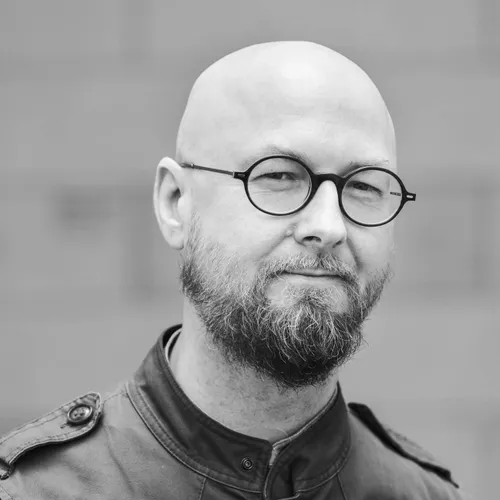
The piece takes its inspiration from the traditional part of Requiem. Lux Aeterna reflects the extinguished light of life, the idea that is brought into the sonic domain via various timbral and spectral layers. Two parts that originate from traditional Requiem are used in this piece. In addition to the central verses of Lux Aeterna, Libera me is included to create a dramatic deepness of the musical form.
Considering the compositional idea, I came upon a two-dimensional perspective on how I could understand and interpret the subject and meaning of this canonical text. On the one side, there is a collective intercession on behalf of a leaving soul (mainly in the section Lux Aeterna); on the other side, the personal appeal to God is being elucidated (in the section Libera me). During the working process, I have been going along these two perspectives. As an illustration, the more narrative, individualised melodic patterns gradually merge into the spaces of collective being and narration. With this concept in mind, allusions to the melodic elements of plainchant and repercussive psalm-singing style are integrated into my own musical aesthetics.
The musical texture could be metaphorically interpreted as a mirror where the rites, signs and customs of our world are reflected like on the invisible veil between life and death. However, sometimes it may seem that our sight is able to distinguish the waves, shadows or other signs coming through the surface and permeating our presentiment. The consciousness of individuality should firstly melt in order to cross that veil. Besides, we are looking for these traces coming back from the disappeared voices. Musically, the textual structures reflect on the sounding surface while some of them turn back in reverse. Consequently, the meaning of words becomes incomprehensible...
The harmony is based on specific intermodal restructuration of spectral patterns. It means that a particular set of harmonics is interpreted as a variance of modal structures. The peculiarity of harmonic and melodic sense is enlightened by applying microchromatic or other intervalic mutations to these structures. The textural-harmonic space is differentiated temporally via united or multi-branched paths of time stream. Hence, the cyclic breath is realised as a synchronised flow followed by various sets of temporal diffusions.
Mārtiņš Viļums